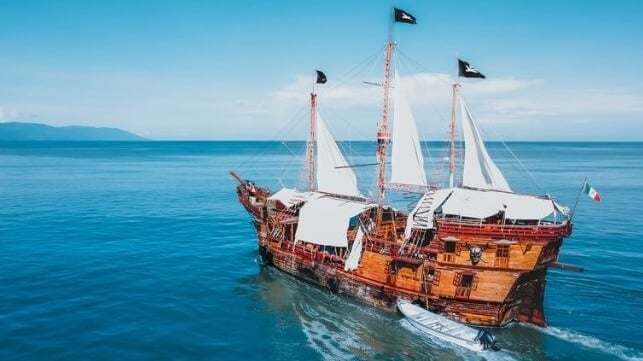After a 13-month investigation and complaints filed by five U.S. trade unions, the U.S. Trade Representative released its proposal calling for escalating tariffs on Chinese-built ships and the companies that operate them designed to address the perceived unfair Chinese trade practices. While the fees are not as large as the proposal in February 2025, they are broader targeting both LNG exports and vehicle carriers. The effort is tied to President Donald Trump’s call to rebuild the American shipbuilding industry.
In light of the information obtained during the investigation and taking into account public comments, the U.S. Trade Representative determined that China’s targeting of the maritime, logistics, and shipbuilding sectors for dominance is unreasonable and burdens or restricts U.S. commerce and is therefore actionable. Specifically, USTR found China’s targeting for dominance unreasonable because it displaces foreign firms, deprives market-oriented businesses and their workers of commercial opportunities, and lessens competition and creates dependencies on China, increasing risk and reducing supply chain resilience. China’s targeting for dominance is also unreasonable because of Beijing’s extraordinary control over its economic actors and these sectors.
USTR asserts that China’s targeting for dominance burdens or restricts U.S. commerce by undercutting business opportunities for and investments in the U.S. maritime, logistics, and shipbuilding sectors; restricting competition and choice; creating economic security risks from dependence and vulnerabilities in sectors critical to the functioning of the U.S. economy; and undermining supply chain resilience.
While it focuses on Chinese vessel operators and vessel owners, Chinese-built vessels, the industry was surprised by the inclusion of all foreign vehicle carriers (PCTCs) and the transport of LNG. The structure does offer some exemptions for vessels in the MARAD programs, engaged in short sea shipping, arriving empty at U.S. ports and below a certain size or capacity threshold. It also includes fees on container cranes, containers, and chassis made in China.
The proposal sets the fees for Chinese-built vessels based on the net tonnage of the vessel and a phased-in schedule. The fee would be charged up to five times per year, per vessel. The first fee effective October 14, 2025, would be $50 per net ton and step up six months later to $80. Annual increases would move to $110 and $140 per net ton in 2028.
For vessel operators of Chinese-built vessels, the fee starts at $18 per net ton in October 2025, moving six months later to $23 per net ton. The annual step-ups would be to $28 in 2027 and $33 per net ton in 2028. The alternative for vessel operators is based on per container discharged, starting at $120 for each container in October 2025, and then the step-ups at $153 per container in 2026, $195 in 2027, and finally $250 per container in 2028. The fee can be suspended for up to three years if the owner orders and takes delivery of a U.S.-built vessel of equal or greater net tonnage. Among the other exemptions are for vessels with a capacity of less than 4,000 TEU, specialized vessels, and Lakers.
Vehicle carriers get one of the harshest penalties, and it targets all foreign-built vessels in the sector. The fee is set at $150 per car arriving on the vessels starting in October 2025. Again, there is a possible exemption for operators who order U.S.-built vehicle carriers.
LNG transport is also targeted with a requirement that one percent is exported on U.S.-built vessels starting in 2028. The percentage steps up every two years so that by 2047 fifteen percent of LNG must be exported on U.S.-built vessels.
The language in the proposal offers a much stricter definition of what constitutes a U.S.-built ship versus the current Jones Act definitions used by the U.S. Coast Guard which permits foreign-made elements and components. The language in the USTR schedule requires all major components of the hull or superstructure of the vessel to be manufactured (including all manufacturing processes from the initial melting stage through the application of coatings for iron or steel products) in the United States. It also specifies key components of the vessel must be built in the United States.
USTR which is led by Ambassador Jamieson Greer who was confirmed at the end of February 2025, said these steps are necessary because China controls nearly a fifth of the world’s commercial shipping fleet, allowing them to influence the pricing and availability of ships used to conduct international trade. It cites data from the Center for Strategic and International Studies that shows the U.S.only accounts for 0.1 percent of global shipbuilding while China produces (more than 53 percent) more than the rest of the world combined. Chinese officials have criticized the effort saying the U.S. was blaming its long-term decline on China instead of investing in its shipbuilding industry.
While the industry was still analyzing the 42-page outline of the fees, the unions were quick to respond calling the USTR effort “meaningful remedies put forward to reinvigorate domestic shipbuilding.” The International Association of Machinists and Aerospace Workers, one of the unions filing the original complaint, said it applauds the United States Trade Representative and vowed to “work to ensure these policies are properly implemented.”
The release of the proposal starts a comment period that runs to May 19, and once finalized the proposal calls for the fees to begin after 180 days.
Source: www.maritime-executive.com









